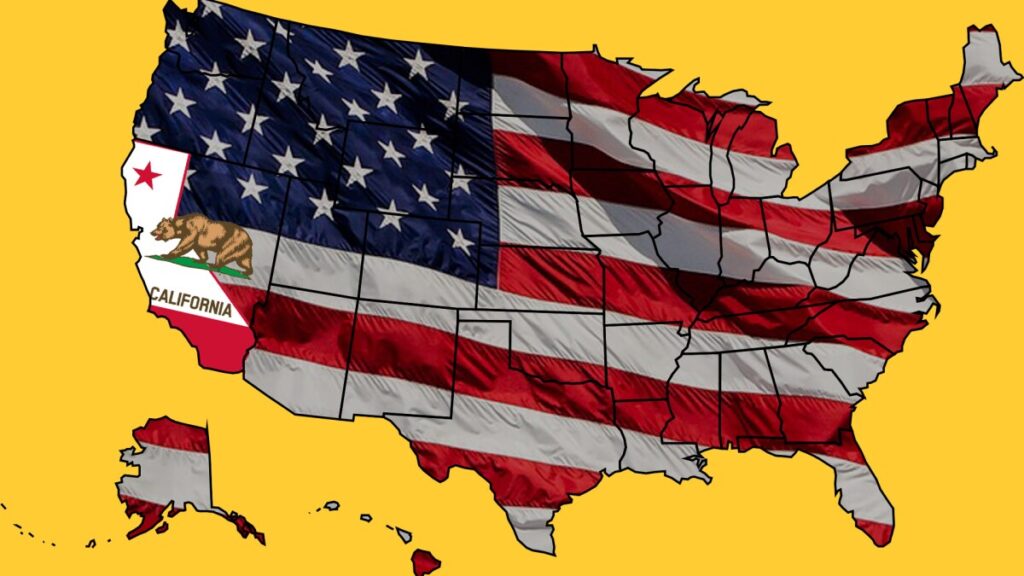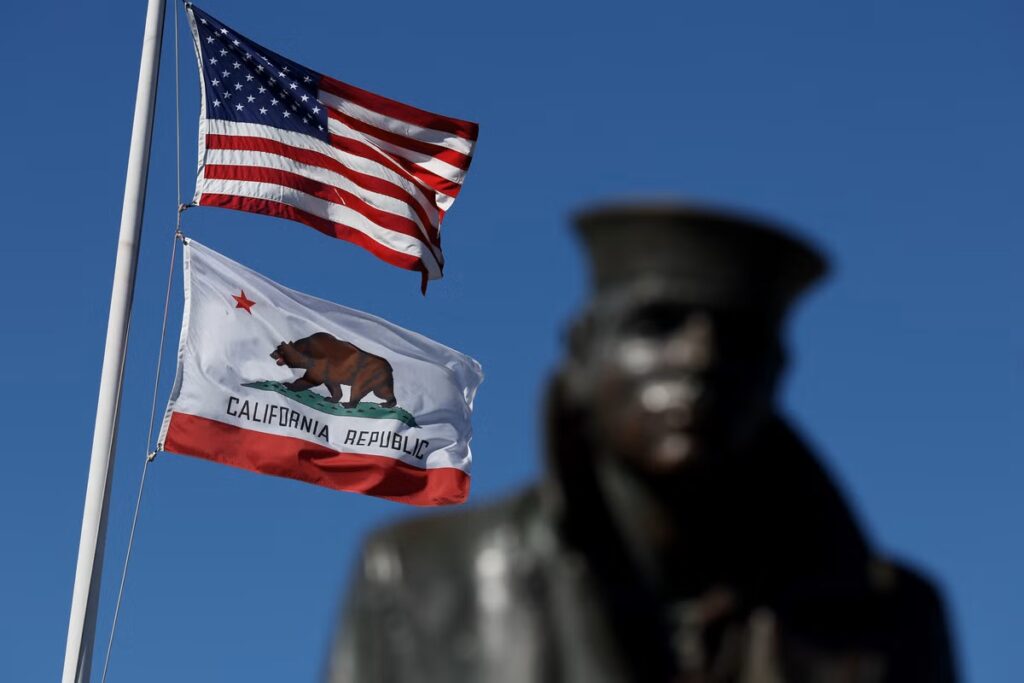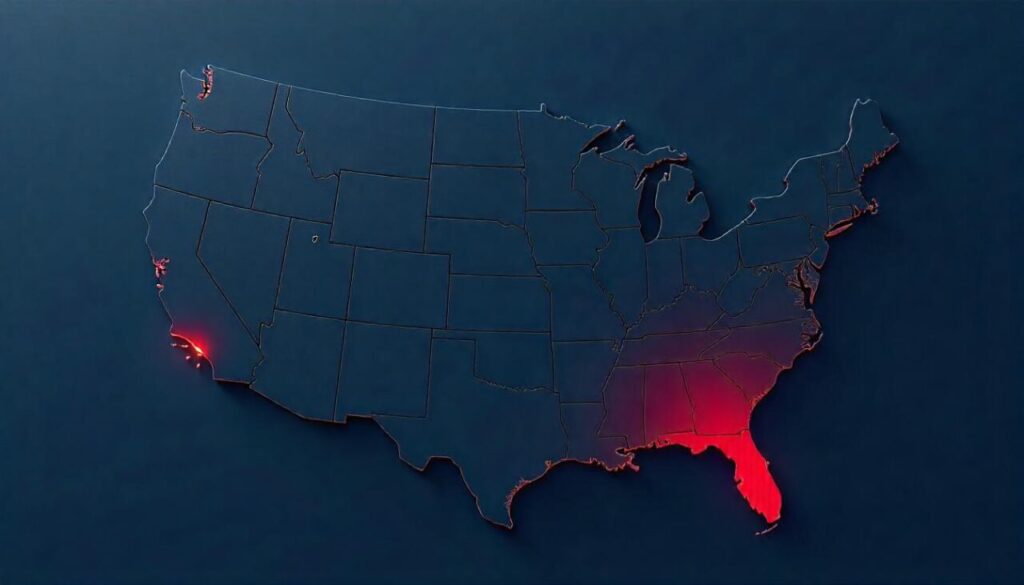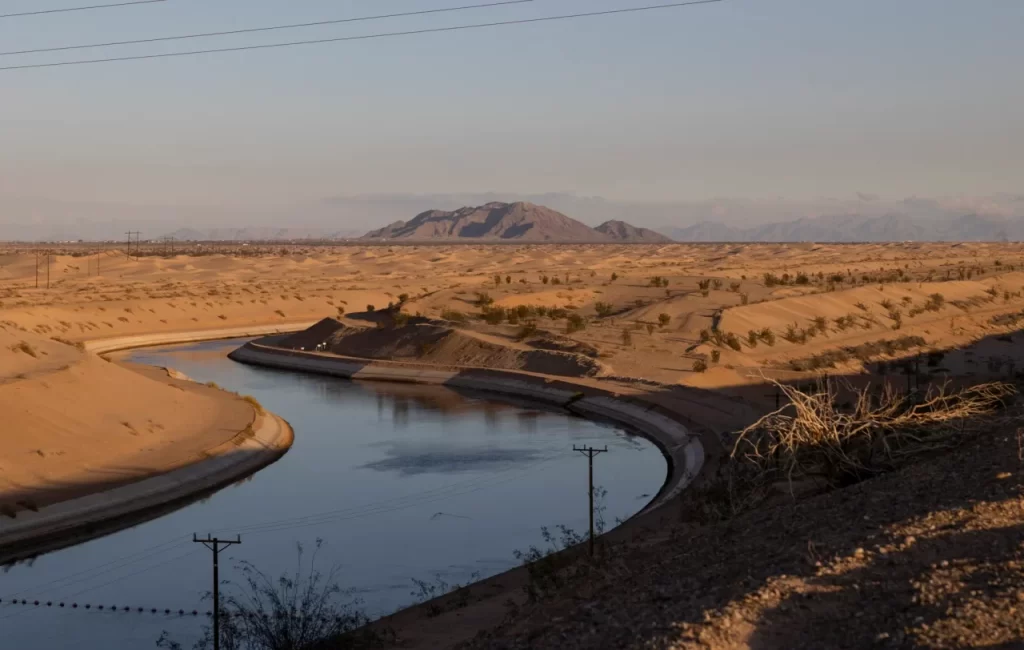
The idea of California breaking away from the United States is actually not a new one. However, recent developments have given this concept new life, with a ballot initiative approved by California’s Secretary of State’s office that would ask voters whether California should become an independent country.
This movement, nicknamed “Calexit,” has gained momentum following political shifts and environmental challenges facing the state. With its massive economy, cultural influence, and progressive politics, California represents a unique case study in what modern secession might look like in America.
The state’s size and wealth make independence theoretically possible, yet the practical, legal, and social problems remain pretty big.
Namely, as political polarization (due to Trump’s presidency) deepens, more Californians have begun to wonder if their future might be brighter outside the union that has defined American politics for nearly 250 years.
Would the state flourish when freed from federal constraints, or collapse under the weight of new responsibilities? How would both California and the remaining United States adapt to such a dramatic restructuring?
Those are the questions we need to ask in this interesting thought experiment.
So, let’s begin.
The Political Earthquake of California Independence

If California separated, the American political situation would transform overnight. As the most populous state in the union, California’s exit would brutally shift the balance of power in Congress toward Republican control.
The loss of California’s electoral votes would severely reduce Democratic chances of winning any future presidential elections, creating what political scientist Stephen Saideman describes as “a deep, deep hole” for Democrats who have relied on California since the early 1990s.
This political vacuum might trigger a domino effect. Northeastern states from Maryland to Maine could feel increasingly alienated in a Republican-dominated country and consider their own secession movements.
History shows such patterns. Georgia, Ukraine, and Moldova only left the Soviet Union after the Baltic states led the way.
Interesting fact: A 2025 YouGov survey found that 29% of Californians supported seceding from the United States, showing significant minority support for the concept.
The Fifth-Largest Economy Goes Solo

California is the fifth-largest economy in the world, outranking countries like India and the United Kingdom. This economic might forms the backbone of secession (separation) arguments, but independence would certainly bring both opportunities and problems.
Economic Benefits of Independence

Supporters of Calexit argue that California contributes more to the federal government than it receives in return. Independence would allow the state to retain more tax revenue and direct it toward state priorities rather than federal programs.
This financial autonomy could enable California to pursue ambitious policies aligned with its progressive values, from renewable energy investments to universal healthcare.
The state would gain complete control over its policies, laws, and regulations without federal interference. This autonomy could create a more representative government that better reflects Californians’ values and priorities.
Economic Challenges of Secession

Despite its robust economy, California would face significant economic problems as an independent nation. Secession would remove California from the United States–Mexico–Canada Agreement (USMCA), affecting both imports and exports and potentially raising consumer prices.
The state would most likely need to establish its own currency and trade relationships, creating potential economic instability during the transition.
The United States would also feel the economic impact of losing its largest state economy. California contributes substantial tax revenue to the federal government, and its departure would force cuts in federal funding for social programs and infrastructure projects nationwide.
Interesting fact: If California were an independent nation today, its economy would rank between Germany and India in global standings.
Legal and Constitutional Roadblocks

Despite growing support for independence, California faces nearly insurmountable legal barriers to secession. The California State Constitution explicitly states that the U.S. Constitution is the supreme law of the land, making secession legally impossible under current frameworks.
The current ballot initiative, which needs 545,000 signatures by July 22, 2025, to qualify for the November 2028 ballot, would not be legally binding. Even if 55% of voters supported independence (the threshold set by the initiative), the federal government would have no obligation to respect the outcome.
Constitutional law denies states the right to secession, and the Supreme Court has ruled that states cannot unilaterally secede.
Any attempt to leave the union would face years of costly litigation and uncertainty.
Interesting fact: The last time states attempted to secede from the Union, it resulted in the Civil War, which claimed over 600,000 American lives.
The Trump Factor in California’s Independence Movement

The Calexit movement has gained momentum in response to political developments, particularly Donald Trump’s presidency.
The group campaigning for California independence described Trump’s election victory as “an attack on everything California cares about” and argued it strengthened the case for secession.
This is not the first time Trump’s presidency has initiated secession talk. A similar proposal emerged after his 2016 election victory.
The current movement believes the timing is better now than in 2016, with campaign leader Marcus Evans stating, “We believe that now is the best time to Calexit“.
Environmental disasters have also fueled some independence sentiment. The devastating wildfires in California played a crucial role in bringing Californians together around the idea of self-governance.
One resident whose girlfriend lost her home in Malibu expressed that secession “is something that needs to be considered” based on the direction of the Trump administration.
Interesting fact: The name "Calexit" was inspired by "Brexit," the United Kingdom's exit from the European Union, showing how global political movements influence each other.
California on the World Stage

As an independent nation, California would need to establish its place in global politics. While its economic power would give it significant influence, California would be a relatively small nation in a world dominated by larger powers.
International Relations Challenges
Building diplomatic relationships and defending its interests globally would present challenges for an independent California. The state would need to establish embassies, negotiate treaties, and develop military capabilities to secure its borders and interests.
California might find natural allies among progressive nations, particularly on issues like climate change. As a leader in environmental policy, an independent California could set an example for other nations by implementing policies that reduce greenhouse gas emissions.
Interesting fact: California already conducts its own international climate agreements with other states and countries, having signed the "Under2 Coalition" with over 220 governments worldwide to reduce emissions.
The Ripple Effect Across America

California’s departure could trigger the disentanglement of the United States as we know it. After the northeast states potentially followed California’s exit, Florida might opt to depart, as could parts of Texas.
Other states with sufficient economic capacity and population size to function as independent countries might see little reason to remain in a diminished union.
This cascading effect would fundamentally reshape North America, potentially creating a patchwork of independent nations where a united country once stood. The economic, social, and geopolitical consequences would reverberate globally.
Interesting fact: Texas, which has its own independence movement, included a call for a referendum on becoming "an independent nation" in its 2024 Republican Party platform.
Water Wars and Resource Challenges

One of the most pressing issues an independent California would face involves water resources. The state already struggles with chronic water shortages, and independence would complicate this situation dramatically.
The Colorado River Question

California depends heavily on the Colorado River for both agricultural and urban water needs. This river, which flows through seven U.S. states before reaching Mexico, is governed by a complex set of agreements known as the “Law of the River.”
As an independent nation, California would need to negotiate new international treaties to secure its water rights.
These negotiations would occur from a position of weakness. Upper basin states like Colorado, Wyoming, and Utah control the river’s headwaters and would gain significant leverage over California.
The remaining United States might use water access as a bargaining chip in broader secession negotiations, potentially forcing California to pay premium prices for resources it currently receives through interstate compacts.
Internal Water Conflicts

Even within California’s borders, water allocation would become more combative. The state’s agricultural Central Valley, which produces over a third of America’s vegetables and two-thirds of its fruits and nuts, requires massive irrigation.
Meanwhile, urban centers like Los Angeles and San Francisco demand increasing water supplies for their growing populations.
Without federal oversight and funding for water infrastructure, these competing interests would need resolution through new California-specific institutions. The state would need to invest billions in desalination plants, water recycling facilities, and improved conservation measures to maintain water security.
Interesting fact: California receives about 4.4 trillion gallons of water annually from the Colorado River through agreements with six other states and Mexico-arrangements that would need complete renegotiation as an independent country.
Cultural Identity in an Independent California

California has always maintained a distinct cultural identity within the United States. Independence would accelerate this differentiation, creating new questions about what it means to be “Californian.”
The Birth of a National Culture
An independent California would likely develop stronger cultural institutions to reinforce its national identity. The state’s entertainment industry, centered in Hollywood, would play a crucial role in creating narratives about California’s unique place in the world.
Schools would teach California history from new perspectives, emphasizing the state’s distinctive development and values rather than its place within American history.
The state’s demographic diversity would become a defining feature of its national identity. With large Hispanic, Asian, and immigrant populations, California might embrace multilingualism and multiculturalism more explicitly than it does as part of the United States.
Spanish might gain official status alongside English, reflecting the state’s historical roots and current demographics.
Cultural Divides Within California

Yet California is not culturally monolithic. Sharp divisions exist between coastal urban centers and inland rural communities, between north and south, and between economic classes.
Independence might initially worsen these differences as communities debate what version of “California values” should define the new nation.
The state’s conservative regions, particularly in the Central Valley and far northern counties, might resist independence or even attempt counter-secession movements to rejoin the United States.
This could create internal borders and checkpoints within what is now California, complicating governance and economic integration.
Interesting fact: Several northern California counties have previously attempted to form a new state called "Jefferson" separate from California, showing that secessionist sentiment exists not just between California and the U.S., but within California itself.
The Path Forward

While complete independence remains unlikely given the legal barriers, the Calexit movement highlights deep political and cultural divisions within the United States.
The current ballot initiative aims to create a commission to “report on California’s viability as an independent country,” with $10 million allocated for the commission and election, plus $2 million annually to run the commission.
Whether or not California ever becomes independent, the movement reflects genuine frustration among many Californians who feel their values and priorities differ significantly from those of the federal government.
One thing is certain: this tension between state and federal authority will continue to shape American politics for years to come.




























